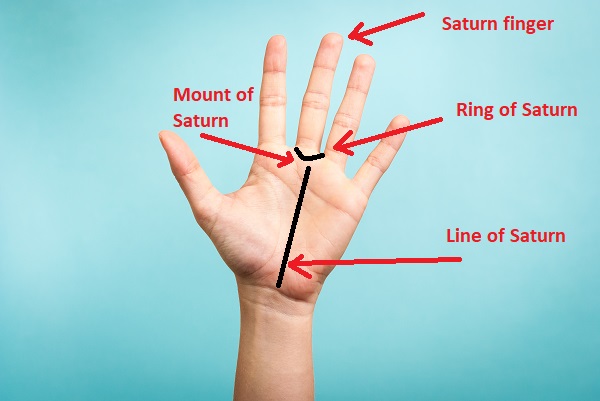Go to: Sun – Moon – Mercury – Venus – Mars – Jupiter – Uranus – Neptune – Pluto
In this post, I have gathered important occult and astrological writings about Saturn for easier personal reference and hopefully, this will be useful for some of my readers as well.
General occult and astrological information about Saturn
Saturn is a slow-moving planet sometimes called Chronos, Falcifer, and Shani by Hindus. He is called the eldest of the gods, and in Greek mythology, he is told to devour his own children, which symbolizes that time (Chronos) destroys the material creation.
Jehovah god has the qualities of Saturn, and many researchers believe the god of Christians and Muslims to be Saturn.
In Islam Kaaba, the black cube is venerated. Saturn’s color is black, its number is eight, which is the total of the corners of the cube. Jewish males sometimes wear the black cube on their foreheads; the New Jerusalem, according to St. John’s vision, is of the shape of the cube. The cube represents confinement and no way out in esoteric symbology.
Saturn is the last inner planet. He doesn’t shine and he’s of a grey color. He travels through all the zodiac signs for around 29 years and 157 days. Capricorn is Saturn’s night house and Aquarius – his day house. He is most exalted in Libra and is in his fall in Aries. He’s in his detriment in Cancer and Leo, and William Lilly writes and Saturn rejoices in the sign Aquarius.
He governs airy triplicity daytime and he is retrograde for 140 days. He is a cold and dry planet, earthly and masculine planet (though considered without any sex in Vedic astrology). It’s a planet that gives depression, limitations, unhappiness, obstacles, poverty, hard lessons, unbending justice, selfishness, and a tendency to like solitude. It’s considered the greater malefic in astrology.
In the body, Saturn rules skin, bones, and the spleen. A strong Saturn in a natal chart gives long life.
Saturn in mythology
In Greek mythology, Cronus is depicted as holding a harp, scythe or sickle, and was told to be born from Uranus and Gaia. He is told to have castrated and overthrown his own father to rule in the Golden Age. It was told that the Golden Age was of great prosperity and peace. Then he was overthrown by his son Zeus and was imprisoned in Tartarus.
He was worshiped by the pre-Hellenic population of Greece and later by the Greeks themselves, though not as much. His functions were connected with agriculture. He was shown as an old man holding a curved sword.
He married his sister Rhea and swallowed all his children because his own parents warned him that one of his children will overthrow him. When Zeus was born his wife replaced him with a stone and tricked Cronus into thinking he swallowed his child. When Zeus grew up he forced his father to disgorge his siblings and overthrew him.
Saturn in palmistry
Saturn’s finger is the middle finger which is told to be the balance wheel of the hand. It keeps the balance between consciousness and subconsciousness. If it’s not longer than other fingers, this makes a person reckless. A long and twisted finger of Saturn provided other marks are present, may mean that the person is capable of committing murder.
A crooked normal-length Saturn finger indicates a lack of cautiousness. A long nail phalange of this finger shows that the person may suffer from periods of sadness and may be superstitious. A long middle phalange shows that the person can become an astrologer.
Saturn also has its own mount and line. The mount of Saturn is not usually developed, and if it’s overdeveloped, there maybe be a tendency towards suicide. If it’s not overdeveloped but present, it shows the love of solitude, quietness, earnestness in work, the love of sacred or classical music, and the tendency to study dry or serious subjects. He will be naturally cautious and sensitive and particular about little things. He is likely to be interested in occult subjects.
Its line is called the line of fate or career. People who don’t have this line are free to choose whatever career they wish, but those with a strong line are predestined to a certain line of work and therefore are not free to choose what they want to do. It’s not right to interpret a straight line of Saturn as success; it more shows predestination than success. Other things should be taken into account to decide whether the person will be happy with the career and whether the career will be successful, such as looking for the line of the Sun.
The line of fate also can show marriages. It’s sometimes used to confirm the marriage after looking at traditional marriage lines on the percussion of the hand on the mount of Mercury. Those will be the lines starting from the mount of Luna and then merging with, or running parallel to the line of fate. The appearance of the line after merging with this influence line will tell whether a marriage will be happy or not, and the best sign is when they don’t merge but run parallel with each other according to Cheiro.
There is also the ring of Saturn, which is rarely found. It’s not a good sign to have. It accentuates the selfish and cold Saturnian nature and increases the likelihood of suicide if a sloping line of head is also found.
Mental characteristics of a person born under the rule of Saturn
The person ruled by Saturn is serious and fond of solitude. He’s a person of few words and is patient and persevering in work. He can work long and hard without much reward because he has a long-term vision and knows that such consistent work will pay off in the end.
Any favorable aspect of Saturn to some planet makes a person a “plodder” in some aspect of life. For example, an aspect to Mercury makes him a researcher, not afraid of spending much time on detailed projects. A person ruled by Saturn often will suffer from periods of sadness and depression.
When the ruling planet Saturn is afflicted, it makes the person very selfish and materially-minded, envious, covetous, and mistrustful. He is then a coward, stubborn, sluggish, liar, sometimes a hater of women, men, or people in general; he might have some repulsive habits or manners; he will be malicious in his character and always finding something to complain about.
Physical characteristics of a person born under the rule of Saturn
The person has dry, yellowish skin. Sometimes he has dark circles under his eyes, and is usually thin but in an unhealthy way. He often has skin or bone problems, sometimes rheumatism or arthritis. He has middle stature, small, dark, and downwards-looking eyes. He has a high forehead and black and sparse hair that is not shiny.
His ears are big, his eyebrows are low set, a rare and thin beard is a likelihood for a man; his countenance is unpleasant and he rarely smiles which makes him even less popular in social circles. He often stoops or holds his head forward, he has broad shoulders and a lean waist. Sometimes there’s some defect in the way that he walks.
The skin has a dark undertone, the person has low vitality; the body looks emaciated and bones make crackling sounds when the person moves. He will like to wear black, will age quickly and the skin will start wrinkling early.
What Saturn represents in astrology
Saturn represents farmers, clowns, beggars, miners, old people; it can represent the father in one’s natal chart, and also the Sun represents the father. Saturn also represents manual workers, funeral-home workers, scavengers, and gardeners.
Saturn also represents sorrow, limitation, old age, poverty but also it can represent hard-earned wealth; it stands for hard labor, illiteracy, black color, selfishness, and disease. It represents land devoid of vegetation. According to Vedic astrology, Saturn, like Mercury, is an impotent planet and therefore can represent impotent people.
It stands for longevity and long periods of time. It also represents disasters, wealth gained through work connected with land or earth’s resources.
Diseases and imbalances caused by Saturn
Saturn causes problems in the right ear, teeth, skin, bones in general, diseases whose cause is depression, cold, or dryness. Saturn causes leprosy, rheumatism, arthritis, consumption, jaundice, trembling, dropsy, gout in hands and feet, apoplexy, hemorrhoids. If it’s found in Scorpio or Leo in any bad aspect with Venus, it can cause ruptures.
Additionally, according to Vedic astrology, Saturn can cause paralysis, knee troubles, and body deformities. It tends to make diseases chronic.
Plants, animals, places, and metals ruled by Saturn
Plants ruled by Saturn
Bearsfoot ♄ Starwort ♄ Wolf’s bane ♄ Hemlock ♄ Fern ♄ Finger fern ♄ White and black hellebore ♄ Henbane ♄ Ceterach ♄ Clotbur ♄ Burdock ♄ Parsnip ♄ Legumes ♄ Vervain ♄ Mandrake ♄ Poppy ♄ Moss ♄ Nightshade family plants ♄ Angelica ♄ Sage ♄ Box herb ♄ Tutsan ♄ Orache ♄ Spinach ♄ Shepherd’s purse ♄ Cumin ♄ Horsetail ♄ Fumitory
Animals ruled by Saturn
Ass ♄ Hare ♄ Mole ♄ Elephant ♄ Bear ♄ Dog ♄ Crocodile ♄ Scorpion ♄ Toad ♄ Serpent ♄ Viper ♄ Hog
Places ruled by Saturn
Deserts ♄ Woods ♄ Valleys ♄ Caves ♄ Dens ♄ Holes ♄ Mountains ♄ Burial grounds ♄ Church-yards ♄ Abandoned and dilapidated buildings ♄ Coal-mines ♄ Dirty places ♄ Muddy places ♄ Wells ♄ Offices
Metals and stones ruled by Saturn
Lead ♄ Lead-stone ♄ The dross of all metals ♄ Dust ♄ Waste materials of all sorts ♄ Sapphire ♄ Lapis lazuli ♄ All valueless stones ♄ Stones of ash or black color
Finally…
This is all the information I have for you about Saturn. If you wish to share something more about this planet, please do so in the comments.
Go to: Sun – Moon – Mercury – Venus – Mars – Jupiter – Uranus – Neptune – Pluto
References
- Saturn – Ancient History Encyclopedia
- Cronus – Greek God – Encyclopedia Britannica
- Cronus in Greek Mythology – Wikipedia
- Christian Astrology by William Lilly
- SkyScript – Lilly’s Astrology with detailed footnotes
- Practical Astrology by St. Germain
- Everybody’s Guide to Palmistry by K. Das
- The Guide to Study Palmistry by Sagar Book House
- Cheiro’s Language of the Hand
- You and Your Hand by Cheiro
- Jataka Parijata, Vol I. (Vol II. is here)
- Astrology in Vedas by J. N. Bhasin
- Learn Astrology The Easy Way (Vedic) by Dr. Gauri Shankar Kapoor
- Textbook of Scientific Hindu Astrology II by Prof. P. S. Sastri



Thank you for the well researched article.
You’re very welcome:)